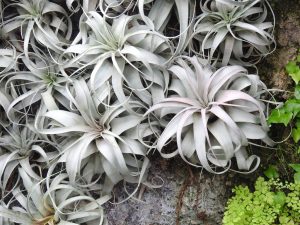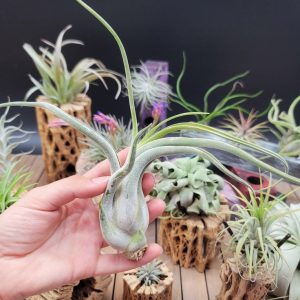- English
- Chinese
- French
- German
- Portuguese
- Spanish
- Russian
- Japanese
- Korean
- Arabic
- Irish
- Greek
- Turkish
- Italian
- Danish
- Romanian
- Indonesian
- Czech
- Afrikaans
- Swedish
- Polish
- Basque
- Catalan
- Esperanto
- Hindi
- Lao
- Albanian
- Amharic
- Armenian
- Azerbaijani
- Belarusian
- Bengali
- Bosnian
- Bulgarian
- Cebuano
- Chichewa
- Corsican
- Croatian
- Dutch
- Estonian
- Filipino
- Finnish
- Frisian
- Galician
- Georgian
- Gujarati
- Haitian
- Hausa
- Hawaiian
- Hebrew
- Hmong
- Hungarian
- Icelandic
- Igbo
- Javanese
- Kannada
- Kazakh
- Khmer
- Kurdish
- Kyrgyz
- Latin
- Latvian
- Lithuanian
- Luxembou..
- Macedonian
- Malagasy
- Malay
- Malayalam
- Maltese
- Maori
- Marathi
- Mongolian
- Burmese
- Nepali
- Norwegian
- Pashto
- Persian
- Punjabi
- Serbian
- Sesotho
- Sinhala
- Slovak
- Slovenian
- Somali
- Samoan
- Scots Gaelic
- Shona
- Sindhi
- Sundanese
- Swahili
- Tajik
- Tamil
- Telugu
- Thai
- Ukrainian
- Urdu
- Uzbek
- Vietnamese
- Welsh
- Xhosa
- Yiddish
- Yoruba
- Zulu
- Kinyarwanda
- Tatar
- Oriya
- Turkmen
- Uyghur

Tillandsias: The Self-Sufficient Greenery
Tillandsias Overview
Tillandsias, belonging to the Bromeliaceae family and the Tillandsia genus, are perennial herbs known for their unique rosette, cylindrical, linear, or radiate plant forms. Their leaves come in various shapes and colors, including grays and blues beyond green, with some varieties turning red under ample sunlight. Air plants feature diverse inflorescences with small flowers in a range of colors, with the main blooming period from August to April of the following year. They are named for their ability to grow without soil, originating from America, tolerating drought and strong light, and thriving in warm, humid, sunny, and well-ventilated environments.

Tillandsias
Reproduction Methods
Tillandsias primarily reproduce through division, and can also be propagated by seeds.
Ornamental Value and Environmental Benefits
With their unique shapes, air plants are excellent for home cultivation as ornamental foliage plants. Some varieties even bear decorative fruits, making them suitable for display on balconies and windowsills. They absorb formaldehyde and benzene compounds during the day and carbon dioxide at night, earning them a reputation as environmentally friendly plants.
Growth Environment
Air plants can be found in diverse environments, from deserts and rocks to swamps and rainforests, even on cacti, utility poles, and more. Most varieties are robust, expanding their growth range through epiphytism, while a few with specific growth conditions have limited growth ranges.
Cultivation Containers and Fixing Methods
Tillandsias can be cultivated in various containers such as shells, stones, deadwood, tree fern boards, and rattan baskets. They can be fixed with wire, rope lashing, or adhesives like super glue or hot melt glue, or cultivated by hanging with copper wire or rope.
Temperature and Light
Originating from the plateaus of Central and South America, air plants can tolerate temperatures as low as 5°C, with an optimal growth temperature of 15°C-25°C, requiring increased ventilation and humidity above 25°C. Varieties with grayish leaves and more white scales require stronger light, while those with greener leaves and fewer scales are more shade-tolerant. Indoor cultivation should place them in bright light to prevent etiolation.

Tillandsias
Watering and Fertilization
Tillandsias can be watered 2-3 times a week with a spray bottle, and once a day during dry seasons, avoiding water accumulation in the leaf heart. Fertilization can be done with a solution of flower fertilizer or phosphoric acid diammonium plus urea diluted 1000 times, applied once a week, or by immersing the plant in a 3000-5000 times diluted fertilizer solution for 1-2 hours. Fertilization can be stopped during winter and the flowering period.
Care Tips
- Temperature and Light: Pay attention to frost protection in autumn, avoid extreme temperatures that cause sunburn or frostbite, provide appropriate shade, and ensure ample light.
- Air Circulation: Good air circulation in autumn reduces the risk of plant rot due to improper temperature and humidity.
- Water Supply: Adjust the frequency of watering according to the season, using pure water or rainwater, and methods such as spraying, soaking, and humidifying the microenvironment. Ensure the plant returns to a dry state and receives adequate light to prevent rot.
- Pest and Disease Control: Air plants rarely suffer from pests and diseases. If necessary for disease prevention or growth promotion, spray pesticides or fertilizers regularly, using orchid fertilizers or pesticides.
Autumn Growth I
n autumn, air plants grow rapidly, with temperature differences enhancing color display, potentially leading to flowering, fruiting, or the sprouting of side shoots.



